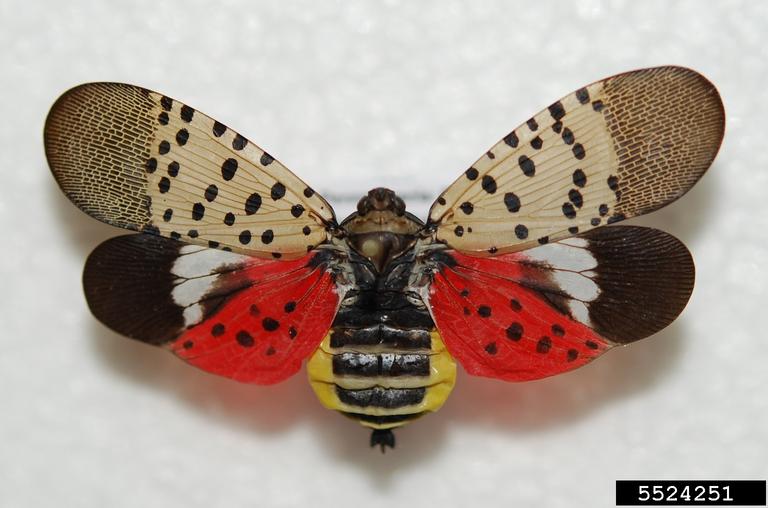Invasive insect species closer to Kentucky border
Invasive insect species closer to Kentucky border


Kentucky residents should be on the lookout for an invasive bug with the potential to disrupt multiple industries. People have observed the spotted lanternfly close to the Kentucky border in Ohio and Indiana. If the insect enters the commonwealth, it can impact wine, apples, Christmas trees, hops and Kentucky’s sizable forest industries.
“Spotted lanternflies feed on over 70 different host plants and could really wreck a number of small commodities we have in the state,” said Jonathan Larson, entomology assistant professor. “They also feed on hardwood trees, so once they get in people's yards, their numbers can just explode. It kind of becomes a quality-of-life issue. Some people in Pennsylvania, where the lanternflies were first discovered in 2014, don’t even want to go outside anymore. There's so many of these bugs jumping and flying around on their property.”
While feeding, the spotted lanternfly excretes a sugary substance called honeydew. When large lanternfly populations establish themselves, the insects create so much honeydew that black sooty mold thrives, negatively impacting other vegetation. This honeydew also attracts stinging insects, who feed on the sugary material. Even though the impacts of infestation in diverse woodlands and natural areas are not as straightforward as in more uniform agricultural and landscape settings, the extra strain the bug puts on trees' resources may worsen tree stress.
“The spotted lanternfly can really devastate plant health, so if someone sees something they suspect is a lanternfly they either need to catch it or take a picture,” Larson said. “Other insects in the state can resemble the spotted lanternfly, so we must verify the insect first.”
Stripes and spots adorn an adult’s front wings, while the back wings are a brilliant red, contrasting with the rest of the body's white, black and khaki coloring. If spotted lanternflies appear in Kentucky and stay relatively contained, Larson said professionals may be able to locally eradicate the insects to prevent their spread and establishment. Treating potential host trees with insecticides and eradicating Tree-of-Heaven and other preferred hosts will help with containment. Early detection increases the chances of controlling the insect’s spread.
The invasive Tree-of-Heaven is one of the insects’ favorite hosts. The fast-growing tree thrives in both urban and woodland settings, out-competing native species and tolerating a wide range of environmental conditions. It commonly affects disturbed urban areas, roadsides and railroad tracks, also invading natural areas, particularly after harvests in wooded areas, where its papery wind-borne seeds can quickly colonize and form dense stands.
“If the spotted lanternfly makes it into Kentucky, it could lead to restrictions on the movement of goods such as lumber, the need for quarantines and even the requirement of permits to travel or move goods out of infested areas,” Larson said. “All of this could have economic or quality-of-life repercussions for Kentuckians living in infested areas.”
To learn more about spotted lanternflies, visit https://entomology.ca.uky.edu/ef465. Kentuckians who think they spot a spotted lanternfly, please send pictures to the UK Department of Entomology at reportapest@uky.edu.
Entomology

